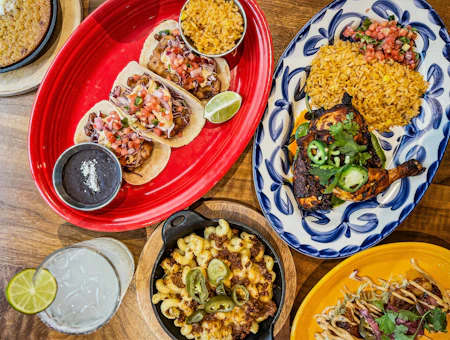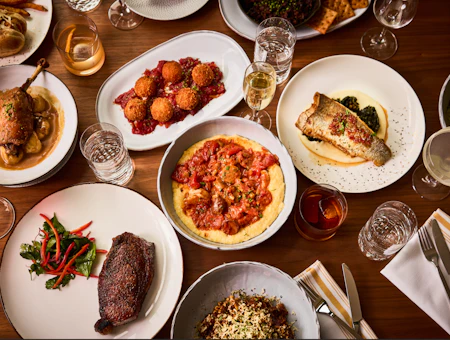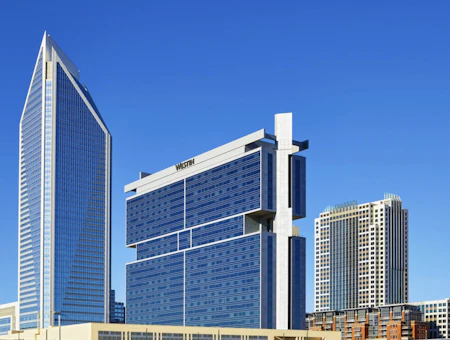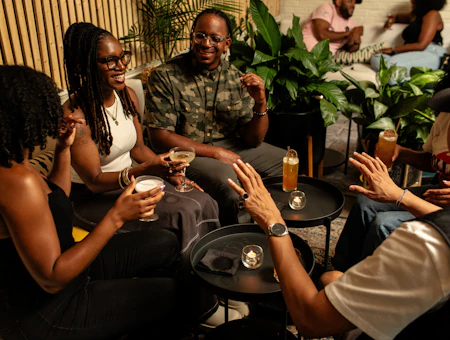Places to Learn Black History in Charlotte
There is no shortage of places in the Queen City to experience Black history and culture.
by Dezanii Lewis
For hundreds of years, Charlotte’s Black community has played a part in shaping the Queen City as we know it today. Learn more about this history at these attractions in Charlotte.
Brooklyn Village
Neighborhood: Uptown
Uptown’s Second Ward was once home to a predominantly Black neighborhood known as Brooklyn. In the late 1800s, the area was a haven for emancipated enslaved people who desired nothing more than to live their lives as free people. Residents built schools, libraries, churches and businesses in order to construct their new lives. Considered the Black Wall Street of Charlotte, the neighborhood and its residents experienced much success. Unfortunately, between the 1960s and 1970s, the neighborhood was razed as part of a development initiative.
There are currently plans to revitalize today’s Brooklyn Village, honoring the neighborhood’s history in the process. These plans include residential, office, retail, cultural and public space for the 17-acre development.

Charlotte Museum of History
Area: East Charlotte
Just behind the Charlotte Museum of History sits the Alexander Rock House, the oldest surviving house in Mecklenburg County. The structure, built around 1774, was constructed by the 17 enslaved people who lived and worked on the farm with the Alexander family.
The museum is a great place to learn about Black history in Charlotte, with exhibits about the city’s Black neighborhoods and the people who helped make the Queen City what it is today.
Charlotte NC Tours
Neighborhood: Uptown
Learn more about the Queen City’s rich African-American history on a walking or biking tour around Uptown and the surrounding area. Charlotte NC Tours offers three tours that dive deep into the contributions of the Black people who helped Charlotte advance into the vibrant city we know today.
Dunhill Hotel
Neighborhood: Uptown
The Dunhill Hotel, built as Mayfield Manor in 1929, is Charlotte’s only historic boutique hotel. The site where the Dunhill Hotel currently stands was once a jailhouse for enslaved runaways. These captured runaways were held in this jail until their enslavers could retrieve them, but they never stopped trying to find freedom. One runaway even escaped again after he was released from the jail.
The Dunhill is one of the stops on the self-guided Charlotte’s Lost Slavery walking tour, featuring locales that honor the history of those enslaved in Uptown.
First United Presbyterian Church
Neighborhood: Uptown
Founded in 1869, First United Presbyterian Church is one of Charlotte’s oldest Gothic Revival churches. Originally called The Colored Presbyterian Church of Charlotte, it was formed when the Seventh Street Presbyterian Church of Charlotte and the Brooklyn Presbyterian Church merged after the razing of the Brooklyn neighborhood. The church was built by formerly enslaved people so that they could have a place of their own to worship and practice their religion. During the Civil Rights Movement, First United Presbyterian also served as a resting place for protestors and activists.
The church has been deemed a historic landmark by the Charlotte Mecklenburg Historic Landmarks Commission for its historical and cultural significance, the architecture of the building, and its importance in the Black community and overall history.

Harvey B. Gantt Center for African-American Arts + Culture
Neighborhood: Uptown
Harvey Gantt broke many barriers in his time. The first Black man to attend Clemson University in 1963, Gantt married Lucinda Brawley, the first Black woman to attend Clemson. After graduating from MIT, Gantt moved to Charlotte where he founded an architectural firm that employed a diverse group of individuals and, among other projects, developed the Johnson C. Smith University Science Center. In 1983, Gantt was elected as Charlotte’s first Black mayor.
The Harvey B. Gantt Center for African-American Arts + Culture, like its namesake, strives to recognize Black voices and trailblazers. Originally named the Afro-American Cultural Center, it was renamed to honor Gantt in 2009. The center hosts a variety of exhibits and events that visitors can experience, including Yoga on the Rooftop, Jazz @ the Gantt and art workshops. The Gantt Center is a destination that effortlessly blends history and culture for a joyful experience.
Johnson C. Smith University
Neighborhood: Uptown
Johnson C. Smith University is backed by a breadth of history. In 1960, students organized sit-ins in Charlotte, leading to the integration of many city lunch counters. This historically Black university even received a visit from Dr. Martin Luther King Jr. in 1966 when the civil rights leader addressed the Catawba Synod Commission on Religion and Race.
What started as a small school is now a thriving university. The fall features a spirited homecoming that typically consists of block parties, cookouts, tailgates and other events. Year-round, the university hosts events ranging from sports to forums that promote and empower Black voices.
Levine Museum of the New South
Neighborhood: Uptown
The Levine Museum of the New South uses history to strengthen the Charlotte community. The rotating exhibits at this Uptown museum explore issues relevant to the history of the Charlotte area to encourage conversation and deepen a visitor’s understanding of these issues.
Examples of past exhibitions include “Grier Heights: Community is Family.” This collaboration, with the Grier Heights Community Center – a historically Black neighborhood in Charlotte – and its residents, highlights 140 years of history within the community.

Romare Bearden Park
Neighborhood: Uptown
Romare Bearden was a Charlotte-born artist who, after his service with the U.S. Army during World War II, studied the arts and used his knowledge to create images and collages with a focus on the Black community.
His namesake Romare Bearden Park, which is located not too far from where Bearden was born, is a tribute to the artist with a nod to his work. The park also features a large grassy area and color-changing waterfall that is often the backdrop of many Instagram-worthy photos.
The Brooklyn Collective
Neighborhood: Uptown
Located in Uptown’s Second Ward, The Brooklyn Collective is a nonprofit organization on a mission to promote inclusivity and economic mobility in Charlotte. The organization is comprised of historic buildings, including the MiCo Building and Grace A.M.E. Zion Church.
Immerse yourself in the historic Brooklyn neighborhood’s history and learn about its founders at the on-site art gallery located in the MiCo building. While the gallery is currently closed, there are plans to reopen in spring 2025.
Grace Chapel, now known as Grace A.M.E. Zion Church, is a historic African Methodist Episcopal Zion church built in 1902. This Gothic Revival-style structure still remains as a fixture of the Brooklyn neighborhood.
Article originally written by Dezanii Lewis. Updates by Arielle Patterson in January 2025.











